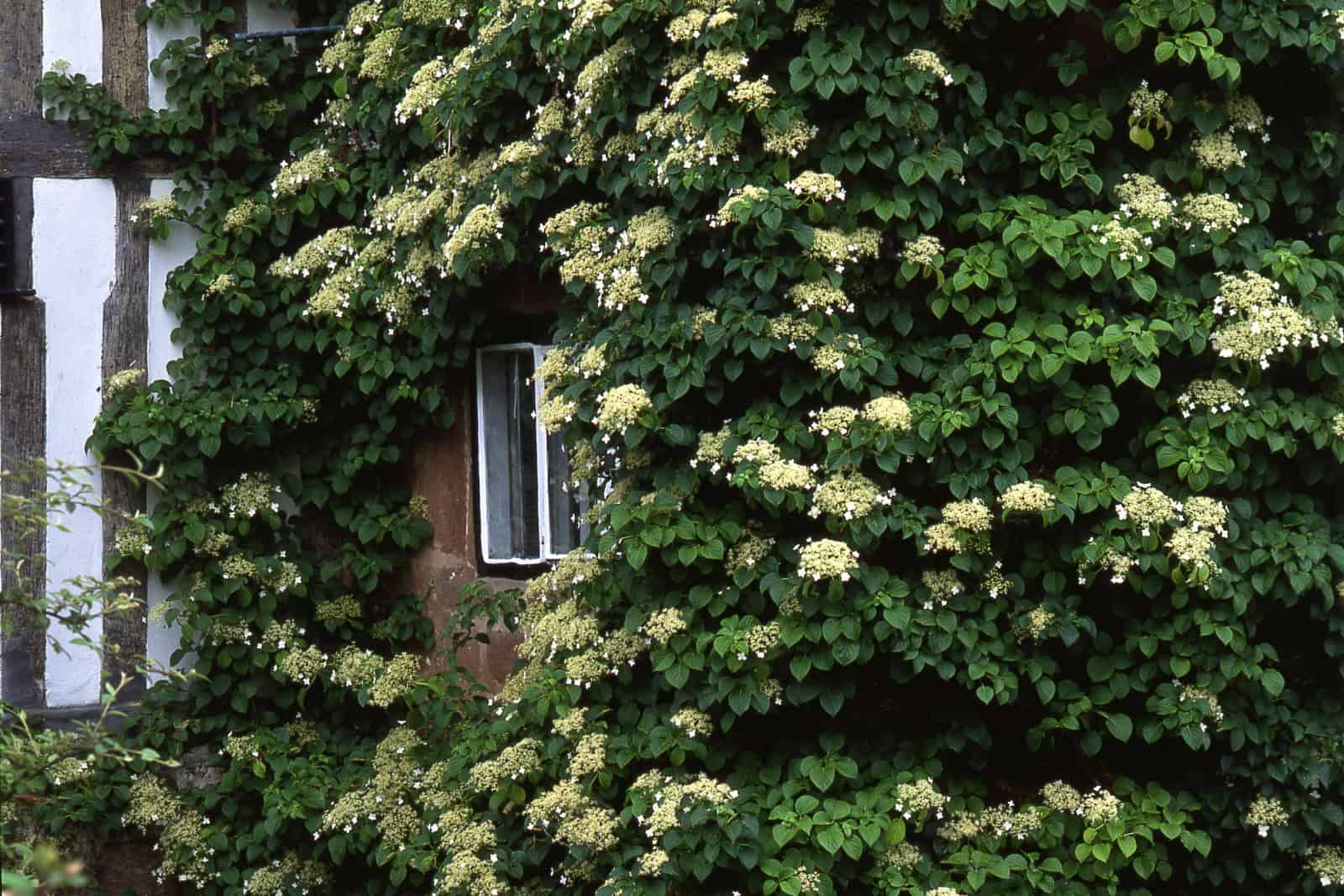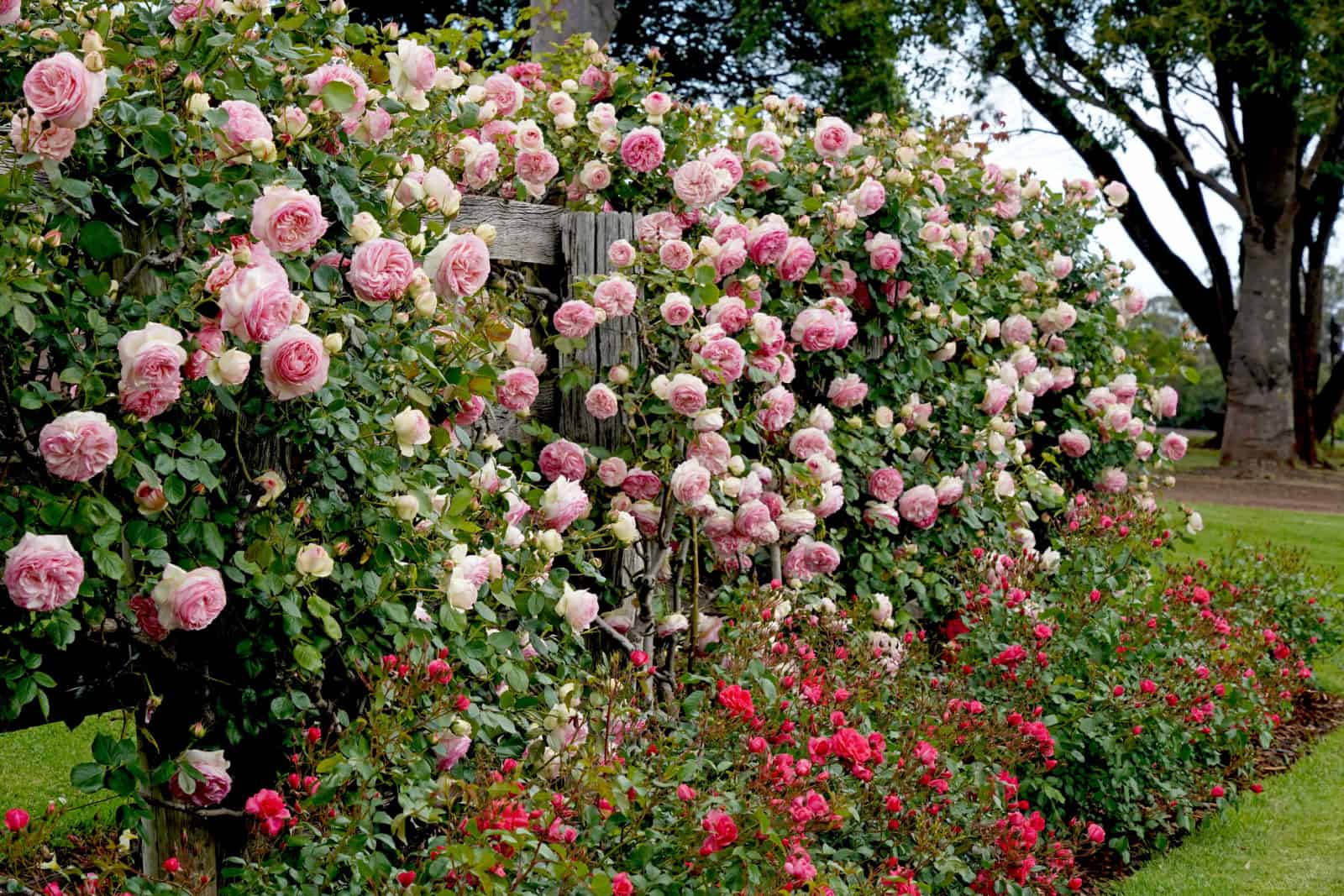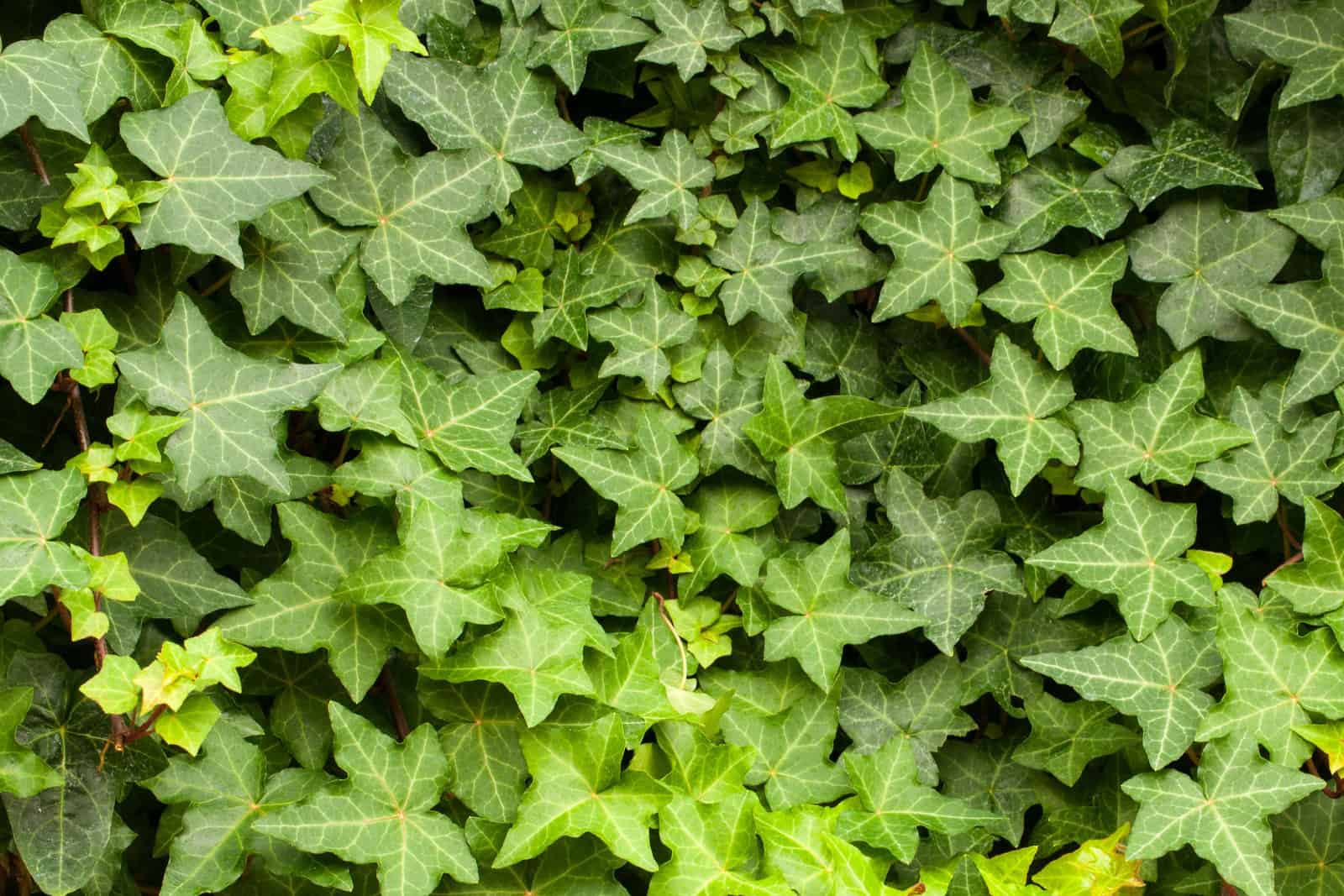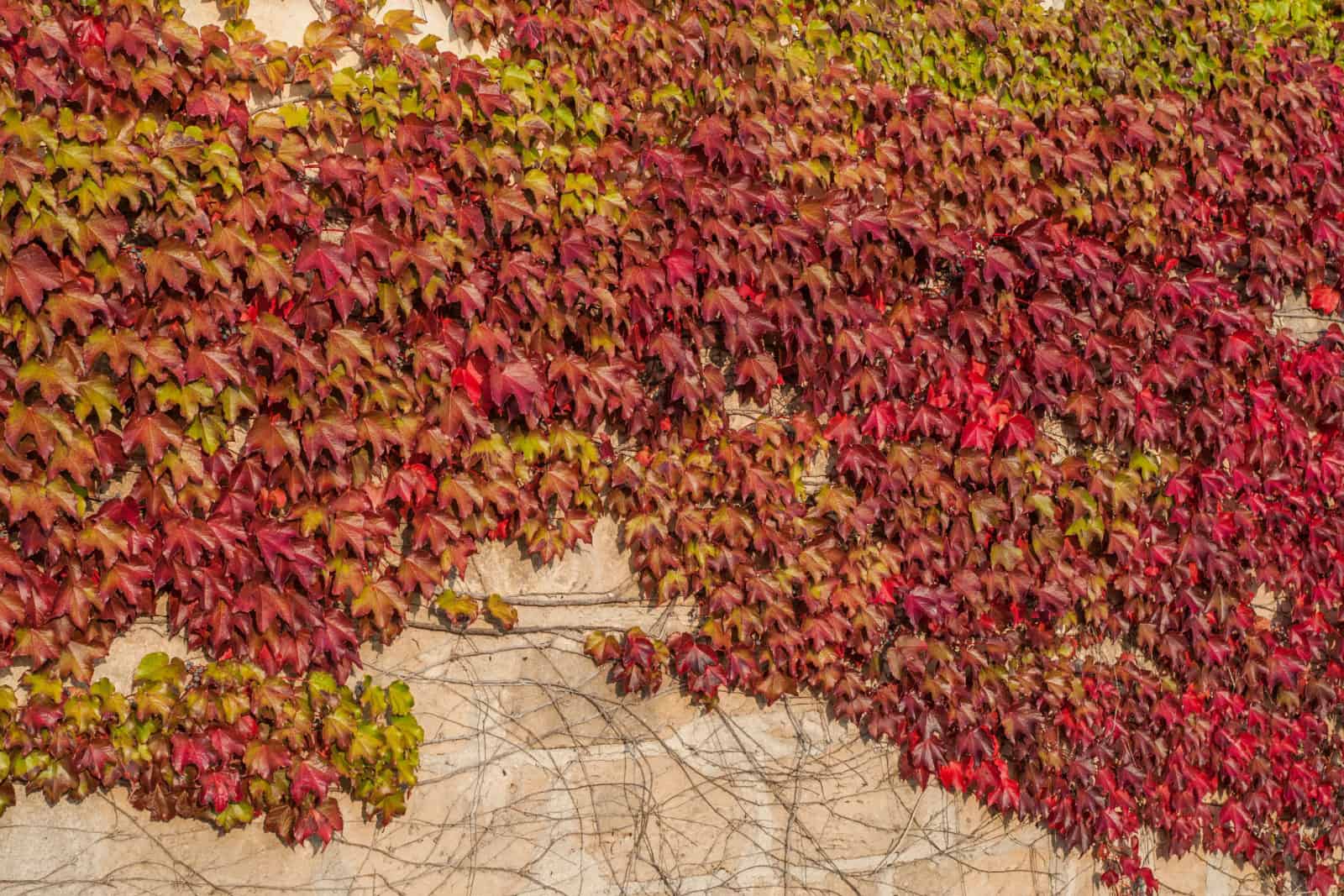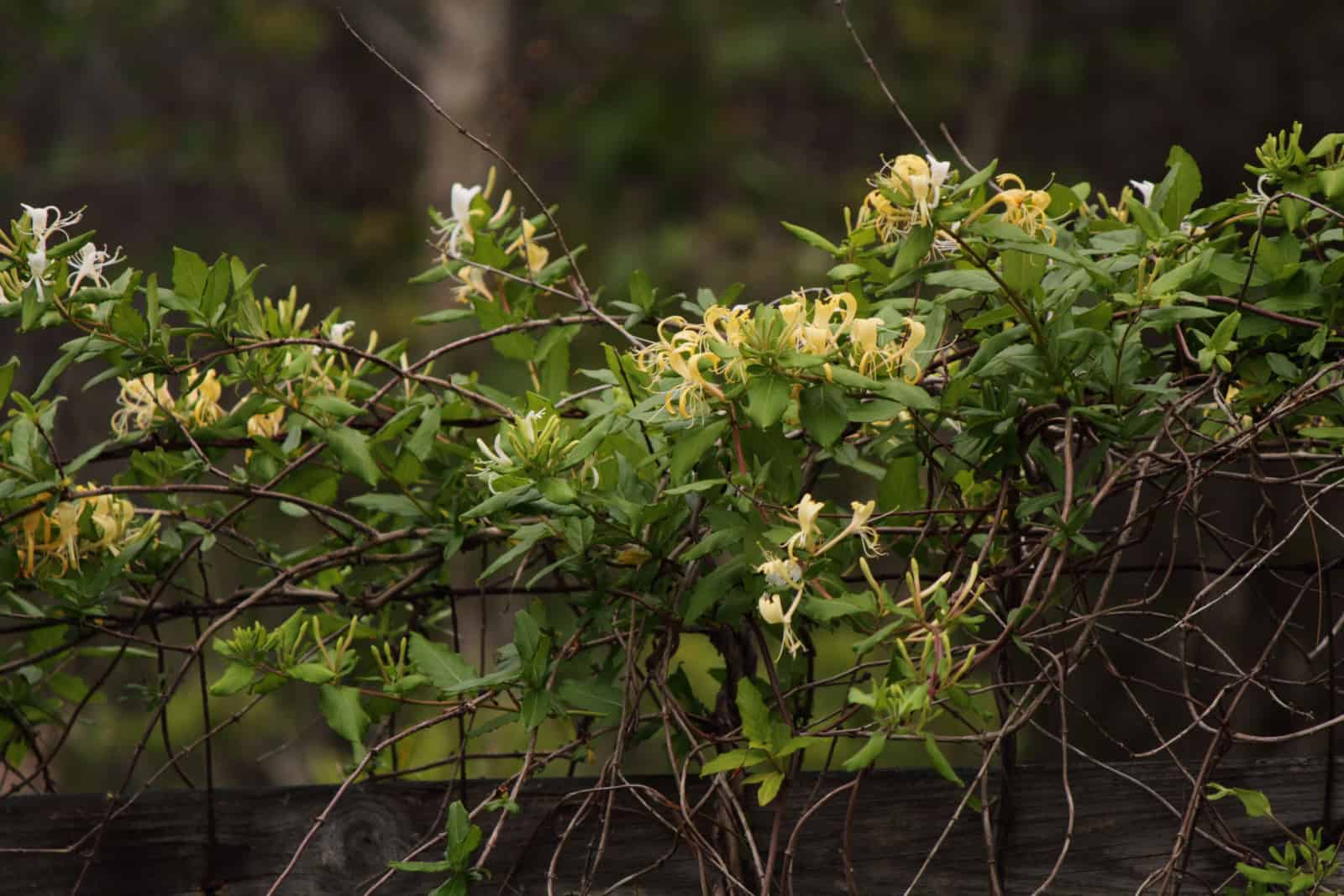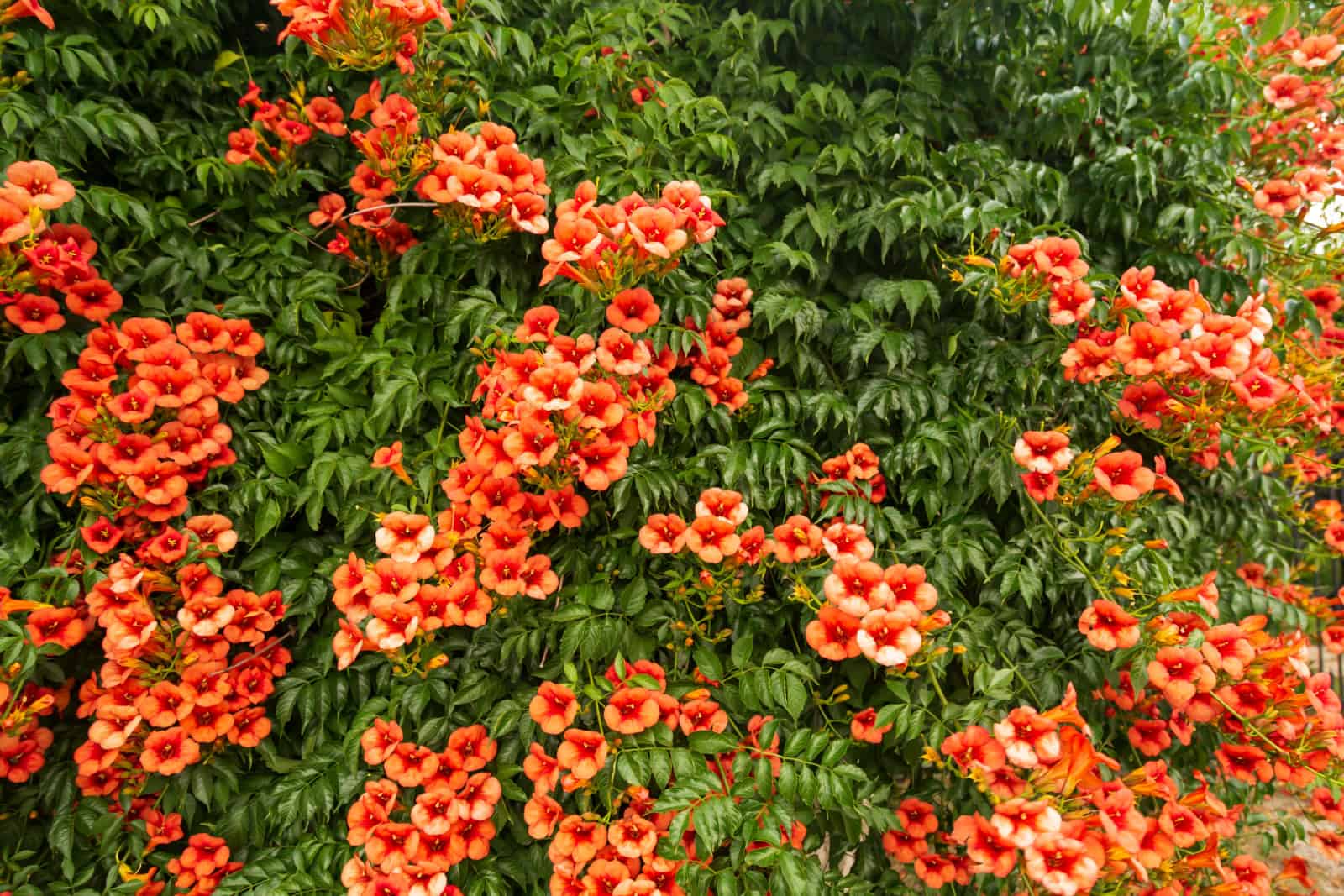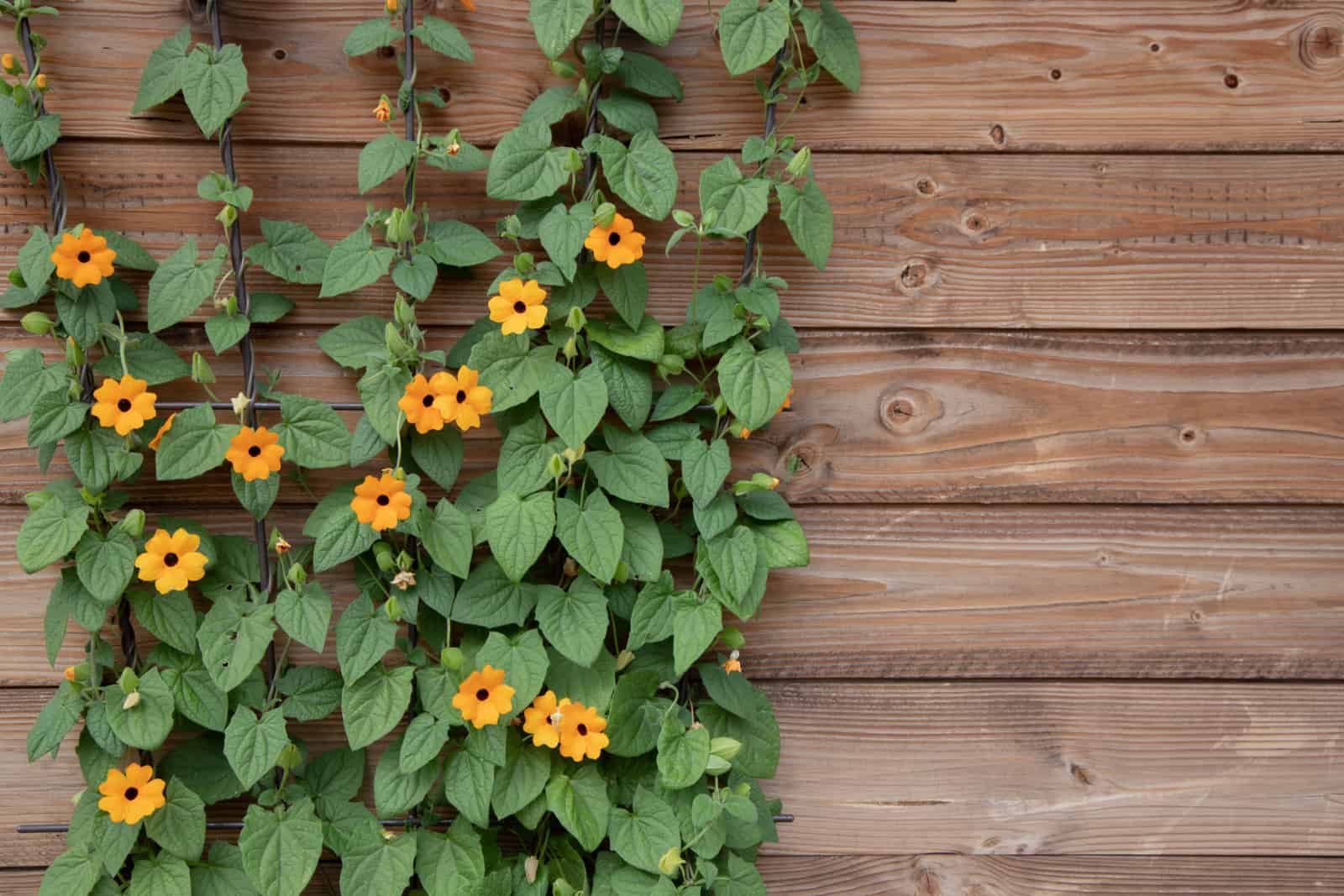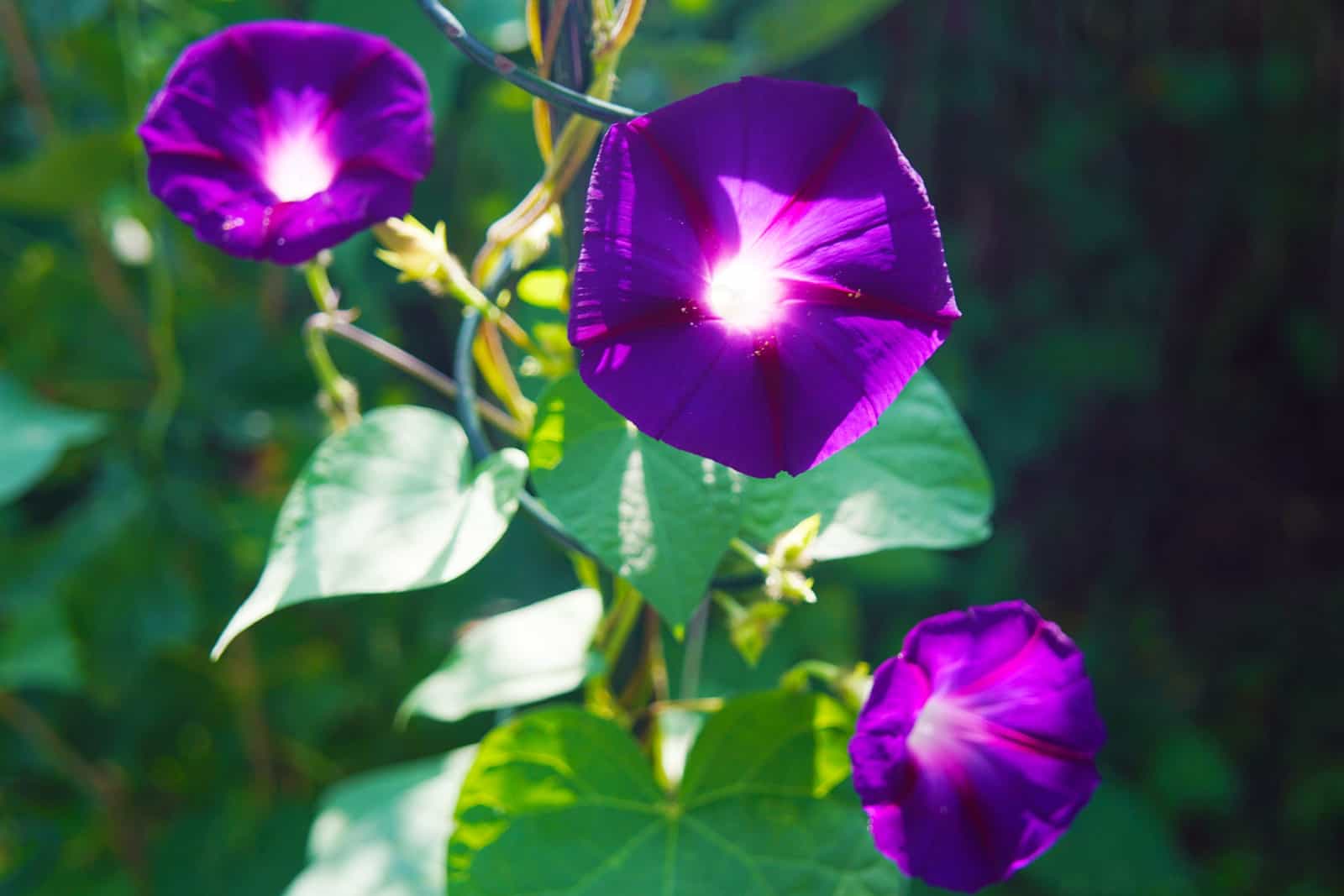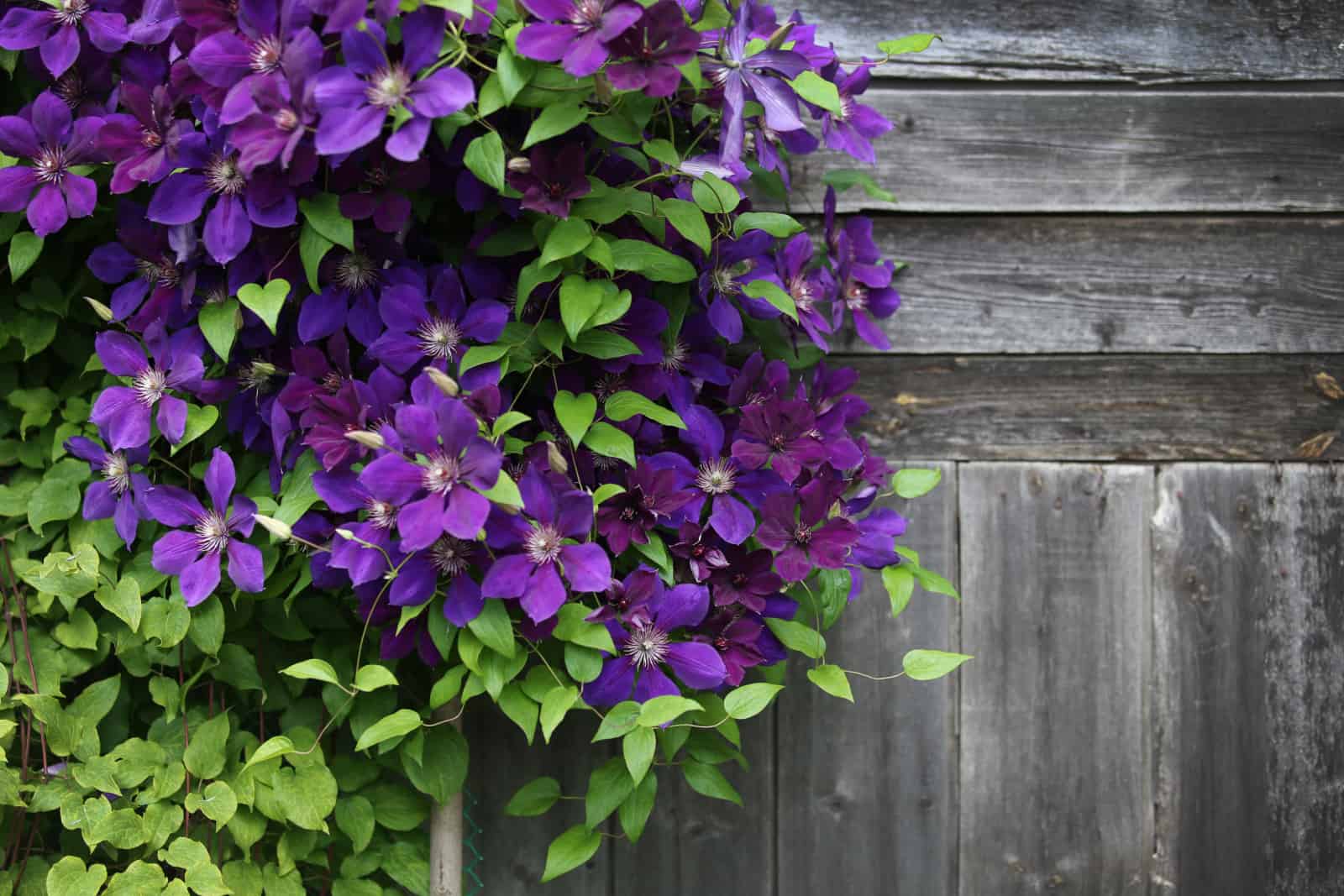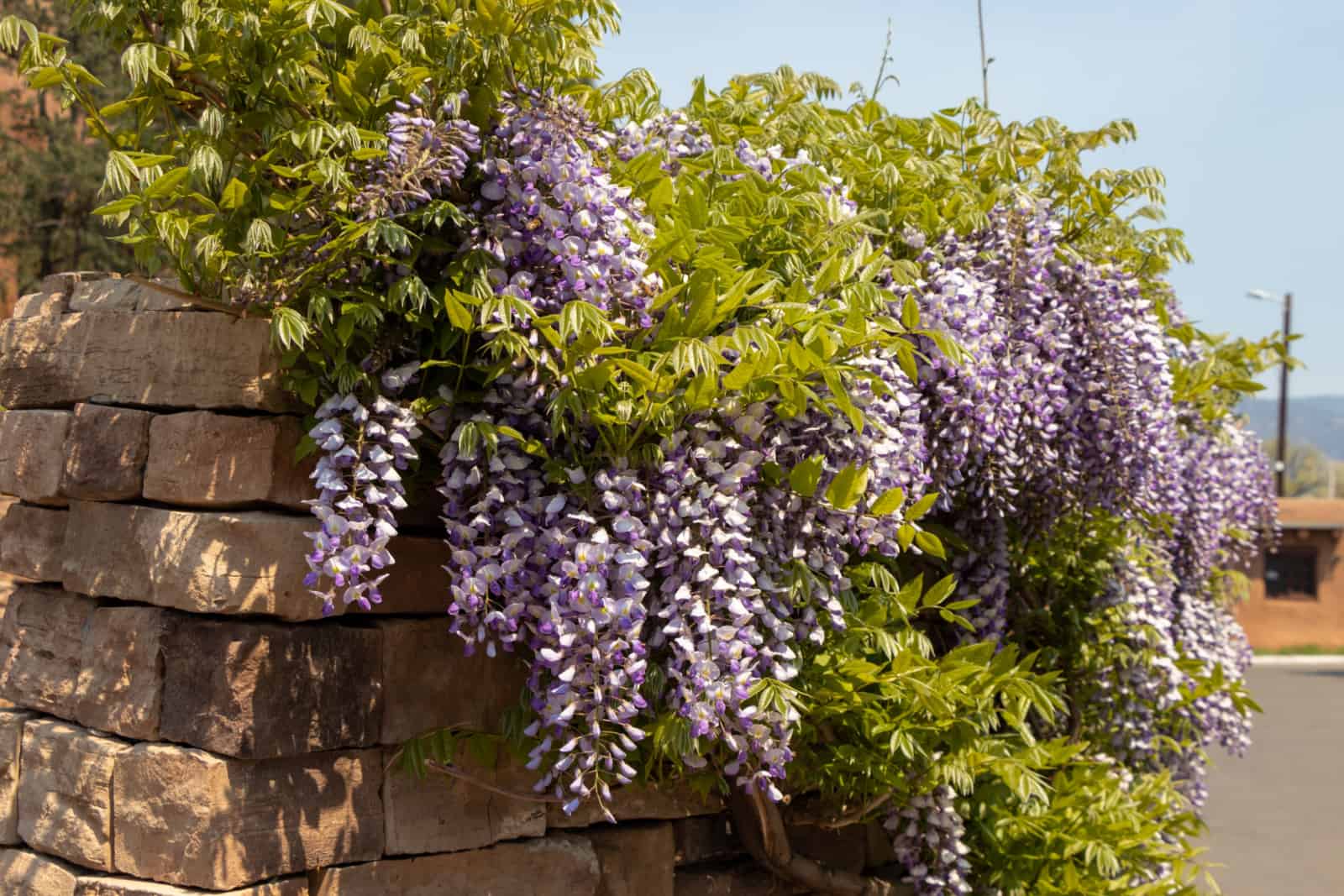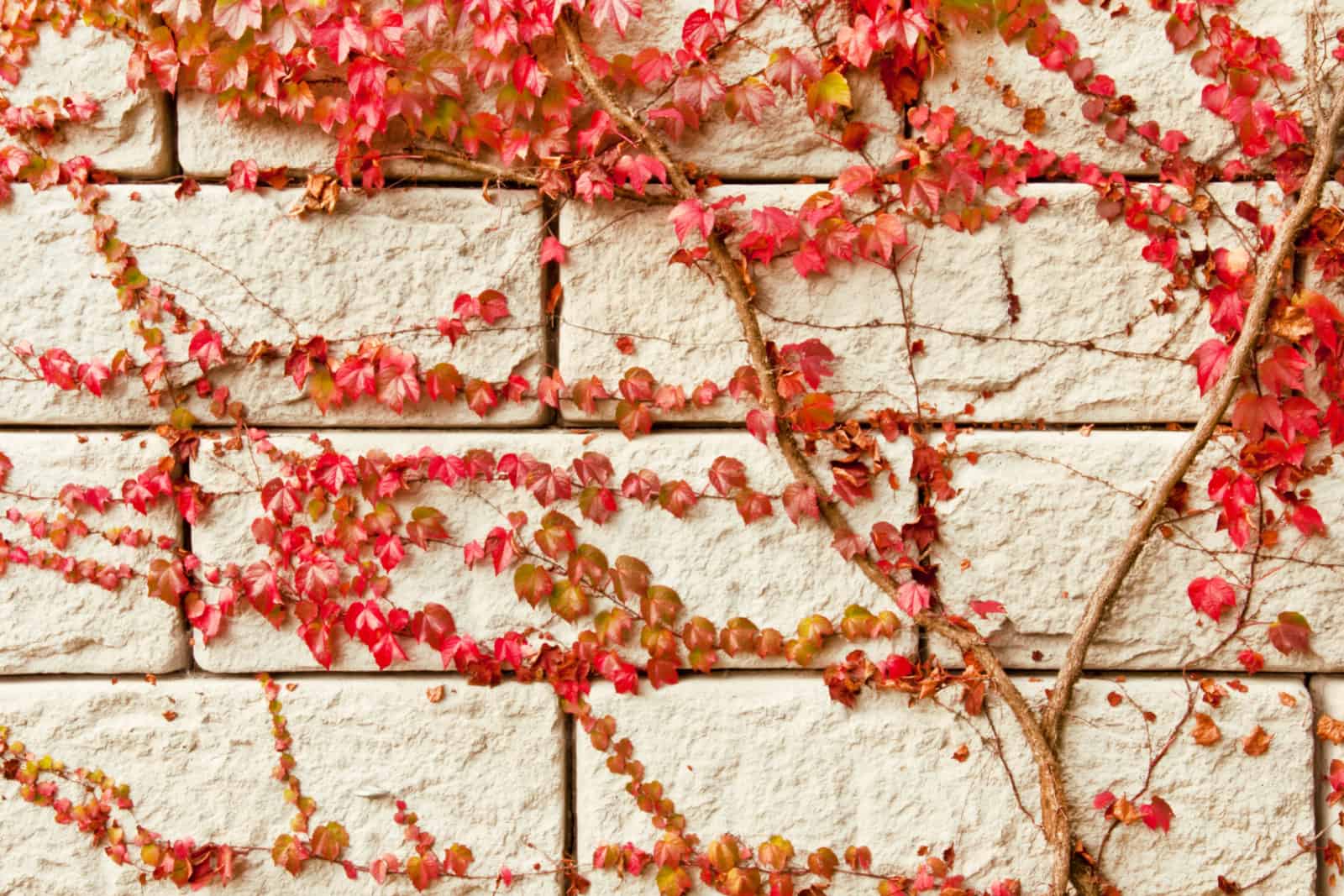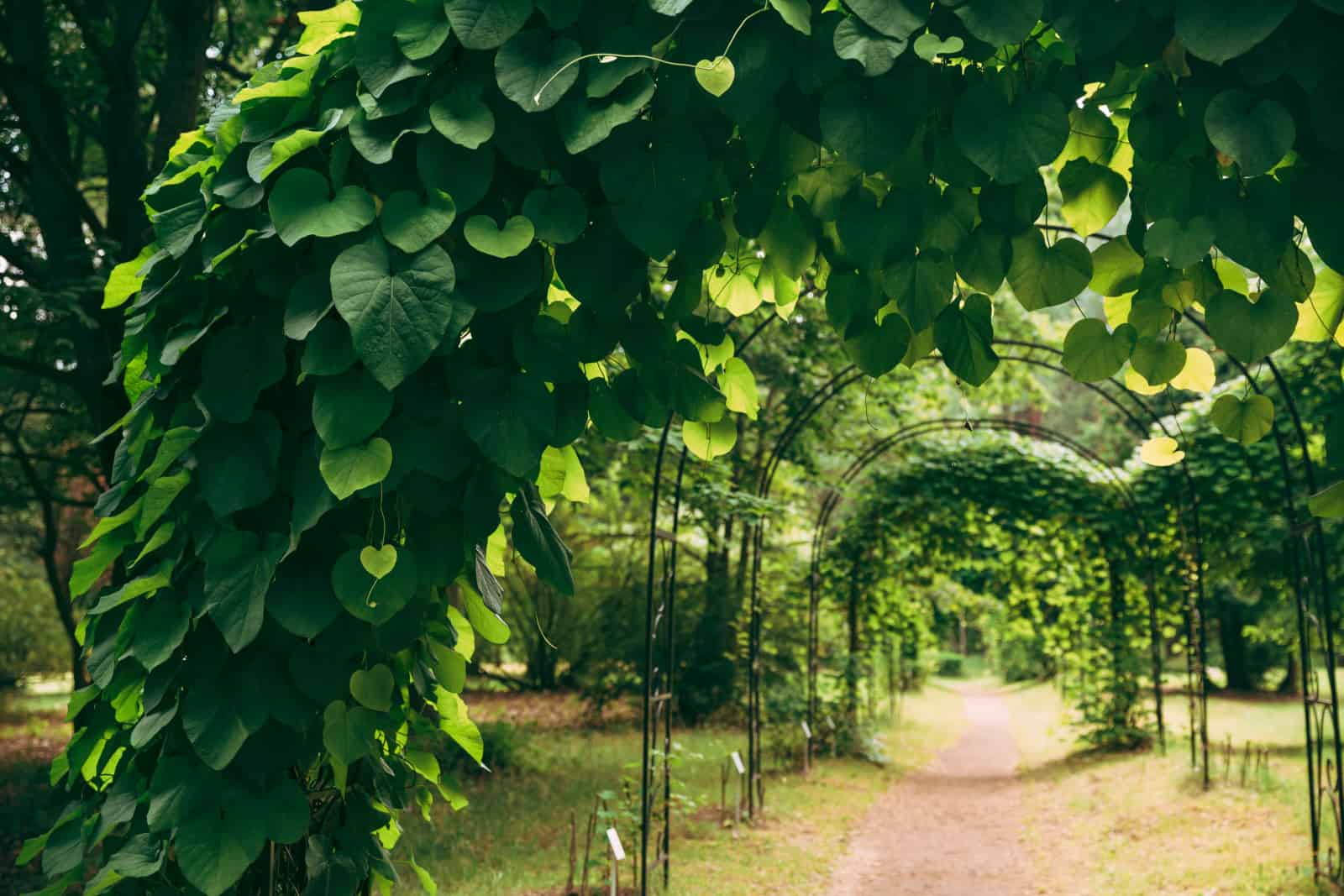Is there anything prettier than a fence adorned with climbing plants? If there is, I haven’t found it! Growing climbing plants on fences isn’t as easy as it seems, but if you follow the correct guide for planting and care, your fence will soon look fantastic.
The great thing about growing plants on fences is that you get a privacy screen and an amazing decoration for the landscape at the same time.
In this article, I’ll show you the 12 stunning climbing plants for fences. You can choose a plant depending on your preferences; you’ll see some evergreen and flowering plants, as well as some fast-growing climbing plants if you’re impatient.
Let’s get started!
12 Climbing Plants For Fences
The first thing to consider before choosing the first plant to climb on your fence is the type of fence you have. For instance, metal fences can’t be damaged no matter which species you plant.
But wooden fences are another story. You also need to choose a variety according to your climate.
Don’t worry, I’ll show you everything you need to know.
Here are my top picks:
• Climbing hydrangea
• Climbing rose
• English ivy
• Honeysuckle
• Clematis
Let’s take a closer look!
1. Climbing Hydrangea
The first plant I’ll mention today is the Climbing hydrangea, a captivating specimen from the Hydrangea genus.
Let’s start with some basic info about this hydrangea plant.
[table id=671 /]
You’ll often see this Hydrangea species grown as a groundcover or attached to fences or other types of structural support.
It typically reaches up to 30 feet in height and can spread up to 5 feet. The species has a fast growth rate, making it a perfect plant for your fence.
During spring and summer, your Hydrangea will produce lovely golden, yellow, or white fragrant blossoms.
You’ll need to plant your Climbing hydrangea in a free-draining and fertile soil type.
The drawback of this lovely climbing plant is that it’s mildly poisonous, so be careful while handling it.
2. Rosa Pierre de Ronsard
Rose species have kind of a bad reputation for being fussy over growing conditions. If you like a challenge, this climbing species from the Rosa genus is perfect for you.
Let’s start with some basic info about the Rosa Pierre de Ronsard.
[table id=672 /]
First and foremost, this isn’t the only climbing variety from the Rosa genus, but it’s definitely my favorite! I often refer to it as an old-school rose because it has been a part of gardens worldwide for a very long time.
What’s so special about Eden roses? The flower type and the color combination is the answer. The blossoms are fully doubled; each creamy-white petal has a pinkish base, making the flower truly unique!
Believe it or not, each blossom can have 70 petals, so I don’t think there’s a need to describe the beauty of this rose any further!
Rose cultivation may be pretty challenging, and the main reason is pruning – especially when it comes to climbing varieties.
The soil for roses must be well-draining and also moist at the same time; the spot should be exposed to full sun, and you need to fertilize them at the beginning of the spring and summer.
The plant is suitable for wooden fences and won’t damage them.
Here’s a video on how to prune and train your Eden rose:
3. English Ivy
There’s always a debate about whether this type of plant is suitable for gardens. English ivy makes a perfect plant for a fence, but you’ll need to be very careful if you decide to cultivate it.
Before I tell you why, here’s some basic info.
[table id=673 /]
As you may know, English ivy is invasive (1) and poses a big threat to surrounding plants, trees, and infrastructure.
But growers simply can’t resist the evergreen, lobed leaves. If you want to grow this Hedera species on a fence, I highly recommend contacting your local extension office to get information on plant invasiveness in your area.
The helix species is one the easiest plants to maintain in general. It does well in shady spots so you’ll often find it grown as a groundcover plant.
Water it when the soil is almost dry, and feed your helix plant during the growing season using triple 20 fertilizer.
4. Boston Ivy
If you take a look at the buildings of Ivy League universities, you’ll notice a plant growing on walls everywhere. Meet Boston ivy, a safe alternative to Hedera helix and one of the best evergreen plants for fences.
Let’s start with some basic info about Boston ivy.
[table id=674 /]
If you’re afraid to plant English ivy for your fence, or if it’s invasive in your area, then grow Boston ivy.
Just to make things clear, the tricuspidata species is also invasive, but not nearly as dangerous as English ivy.
This vining plant is grown for both summer and fall colors; the leaves will have a recognizable green color during the summer before turning burgundy in the fall.
The best way to encourage the foliage to turn the most beautiful shade of red in the fall is by providing your Grape ivy with full sun.
5. Honeysuckle
The great thing about honeysuckle plants is that there are numerous varieties and each is suitable for fences.
Let’s start with the basic info about Lonicera plants.
[table id=675 /]
Honeysuckle is a well-known flower that attracts hummingbirds. Did you know that Lonicera species are one of the best fast-growing climbing plants for fences?
You can plant it in various soil types and it is adaptable to various light levels.
The lower part of the plant can become kinda unattractive when the honeysuckle plant is fully mature. The main reason for this is that the lower part can’t get enough light because the vines block the sunlight.
But a good trimming will take care of this. Vining species from the Lonicera genus can get invasive, so pruning should be a regular part of their care.
Your honeysuckle will benefit most if you prune it during hibernation, which occurs during the colder months.
6. Trumpet Vine
Trumpet vine plants are mainly grown for their lovely blossoms. Red, yellow, and orange blossoms appear in summer and attract beneficial insects and pollinators to our gardens.
Here’s some basic info about the Trumpet vine.
[table id=676 /]
This vigorous grower can reach 40 feet in length, so you need to be careful where you plant it. If your property is small, you might want to consider another plant for the fence.
The radicans plant tolerates literally everything; full sun, partial shade, clay soil, sandy soils, dry soils, moist soils, etc.
The real question about this plant is not how to cultivate it, but rather how to restrain its growth.
You need to be careful with Campsis plants because they are considered to be flammable, which can be dangerous in some areas. (2)
It didn’t get the nicknames “Devil’s shoestring” or “Hellvine” for no reason!
7. Black-eyed Susan Vine
This is a plant that has a stunning appearance, but a very weird name. Each blossom has a dark brown center, but Black-eyed Susan?
Aside from the name, the Thunbergia alata plant has a lot to offer.
Let’s start with some basic info.
[table id=677 /]
The golden-yellow and orange blossoms of the Thunbergia alata plant look amazing on fences. Heart-shaped, green foliage adds beauty to the already stunning plant.
The flowering season of the Black-eyed Susan vine lasts for a long time and, during the season, you’ll notice many pollinators and beneficial insects in your garden.
I have to warn you that the Black-eyed Susan vine isn’t related to the Rudbeckia hirta plant, which also goes by the name Black-eyed Susan (without the term vine).
8. Morning Glory
Don’t let the name confuse you, Morning glory is as glorious in other parts of the day as it is in the morning!
Let’s see some basic info about the tricolor plant from the Ipomea genus.
[table id=678 /]
A perfect fast-growing climbing plant for fences is the Ipomea tricolor, aka Morning glory. The plant got this nickname because the flowers open in the early morning and will definitely be the prettiest thing you’ll see when you wake up.
I believe that the Morning glory plant has the most beautiful blue flowers in the plant world. They resemble trumpets and emerge as pink, but get sky-blue hues as they mature.
Feeding and irrigation are essential parts of Ipomoea tricolor care and the best way to encourage healthy growth and flower production.
Be careful because the Flying saucers plant is considered toxic to pets (3) and humans.
9. Clematis
And the award for the best plant for fences goes to… the Queen of vines, aka the Clematis! This plant has no alternative and is well-liked by Europeans.
Here’s some basic info about the Clematis plant.
[table id=679 /]
I’m not sure there are words that can describe the beauty of a single Clematis blossom. Let me try; the blossoms of the Clematis species come in purple, pink, white, and red, and you can also come across variegated species.
You can choose from species that produce showy and large blossoms or go with fall-blooming specimens that’ll adorn your fence with hundreds of tiny blossoms.
This vine also makes a perfect potted plant for privacy.
Here’s a video on Clematis care:
Be careful if children or pets play around the fence for your Clematis as the plant is considered highly toxic.
10. Wisteria
If you want a plant for your fence that’ll produce multiple blossoms in May, then Wisteria is a perfect choice. I recommend the sinensis species, also known as Chinese wisteria. It’s one of the plants that look like lavender.
Let’s start with some basic info.
[table id=680 /]
The shades of blue, white, lavender, and pink on Wisteria blossoms are all your fence needs to be perfect!
Unlike other climbing plants on this list, Wisteria can be tricky to maintain.
You’ll need to plant your Vilmorin plant in a slightly acidic and well-draining soil type and keep it constantly moist.
Never transplant the sinensis plant because it can severely inhibit growth, and the transplanted plants may not recover.
You’ll need to trim your Wisteria regularly, especially if you live in North Carolina because the plant is invasive in that area.
11. Virginia Creeper
Remember Boston ivy? Well, it has a stunning relative known as Virginia creeper. Both plants are grown for summer and fall colors, but let’s see if Virginia creeper has something more to offer!
Here’s some basic info.
[table id=681 /]
The Virginia creeper produces amazing leaves with five leaflets. Interestingly, there’s no need to attach the plant to the fence, it’ll do it itself.
This is a great thing until, well, it isn’t; it may quickly take over your yard (or even your neighbor’s yard) if you don’t control its growth.
Pollinators and beneficial insects love properties where the Virginia creeper is cultivated. This vining plant isn’t fussy over anything; the soil type, acidity, moisture content, and light level don’t really matter. It will flourish if you forget about it; just be careful, it can ‘flourish’ too much!
12. Dutchman’s Pipe
I decided to put the Dutchman’s pipe plant last on my list because you shouldn’t grow it if you aren’t experienced, have small children or pets, or if you live in an area where the plant is considered invasive.
Here’s some basic info.
[table id=682 /]
I’ve mentioned many drawbacks, so I’m sure you are asking yourself why on earth would anyone grow this plant?!
Well… it’s definitely because of the looks. Large, heart-shaped leaves overlap and form a dense cover on the structure you attach them to.
The undersides of the leaves are silver and perfectly combine with a dark green surface.
The best way to control the growth is by pruning the Dutchman’s pipe at the end of winter.
FAQs
1. Is there an evergreen climbing plant?
Yes, actually there are a few. Clematis and honeysuckle are the most famous climbing plants that don’t lose their green color over the year. Plants such as Boston or English ivy may change color during fall, but will never lose their leaves and will keep producing new growth.
2. Which climber flowers the longest?
Some of the climbing plants with a long blooming season include Hydrangeas, Clematis, Morning glory, and Black-eyed Susan vine. Each of these plants has lovely cultivars, so you can choose between various blossom colors.
Wrapping Up
Luckily, you have a lot of climbing plants for fences to choose from. I’ve shown you 12, but remember that these plants have cultivars, so choosing the hue won’t be a problem.
Pay attention to some features of climbing plants, such as toxicity, maintenance level, or invasiveness.
If you are careful enough and control the growth of invasive species, you won’t have any issues no matter which species from the list you choose.
Until next time!
[sp_easyaccordion id=”18524″]

